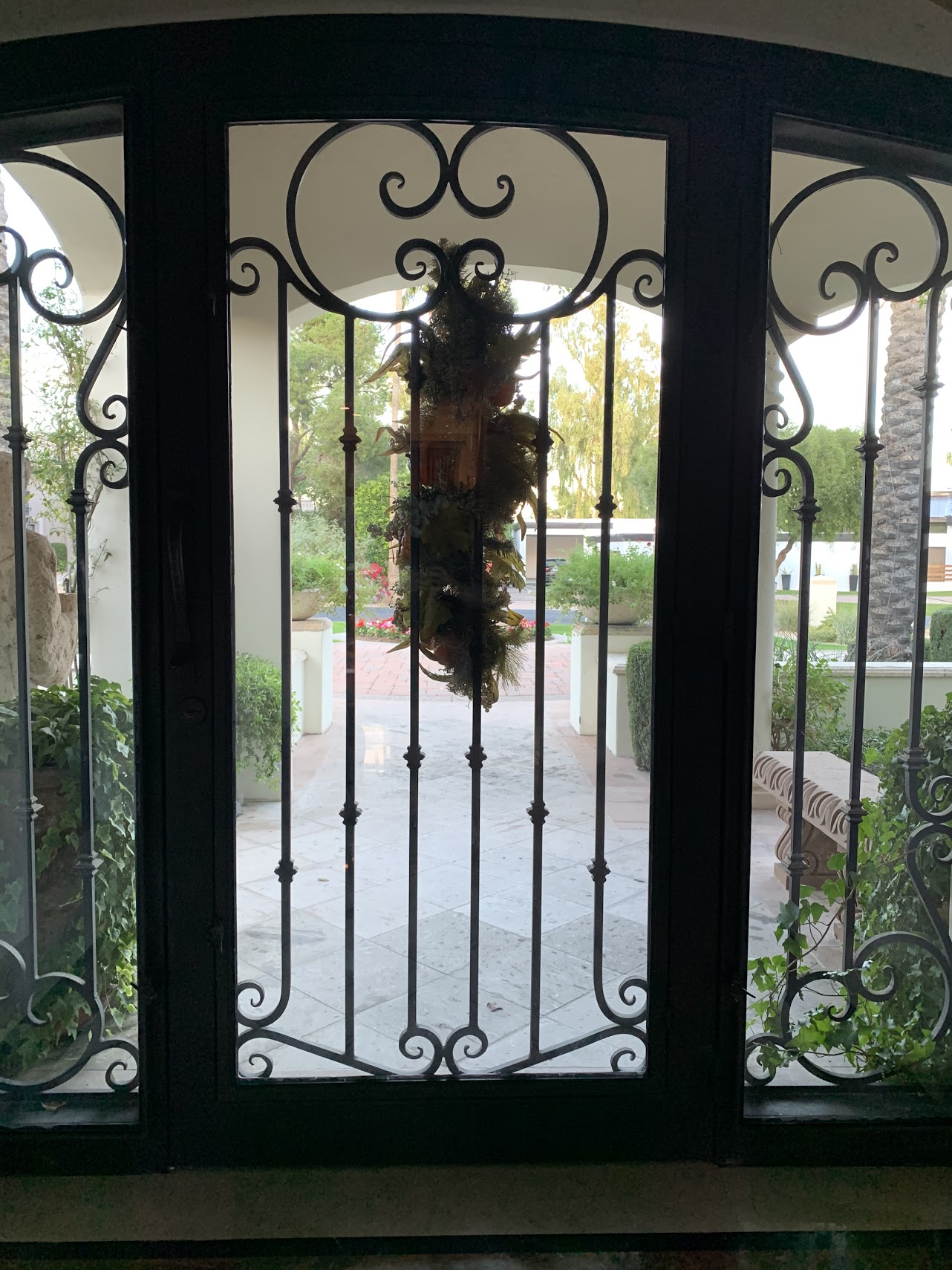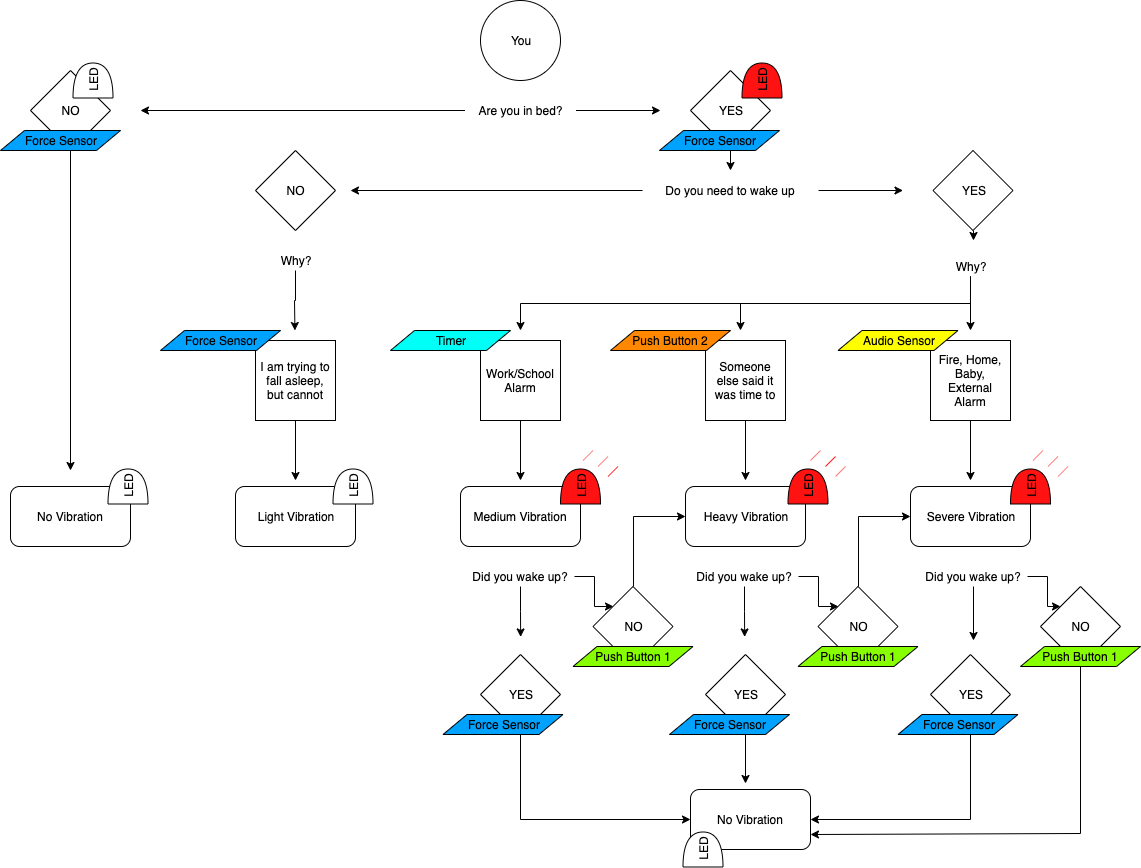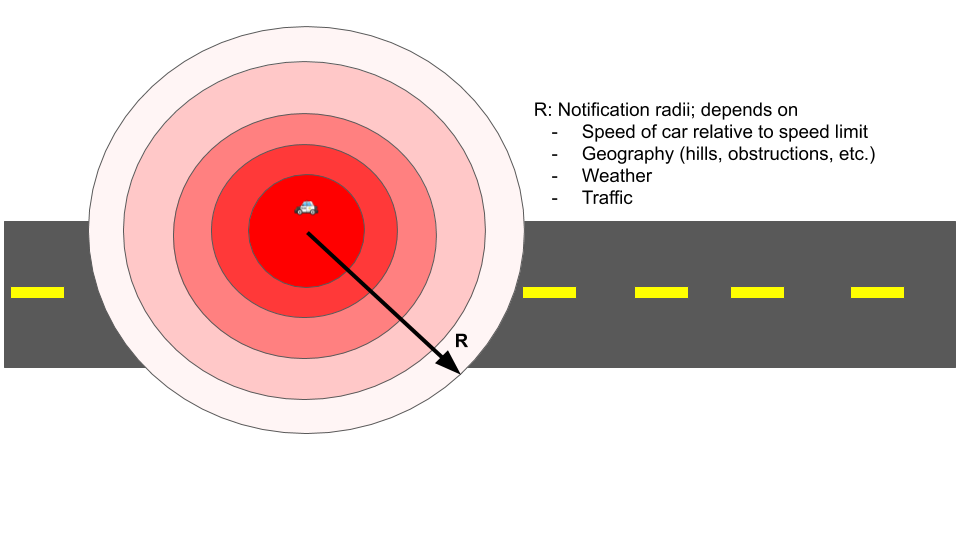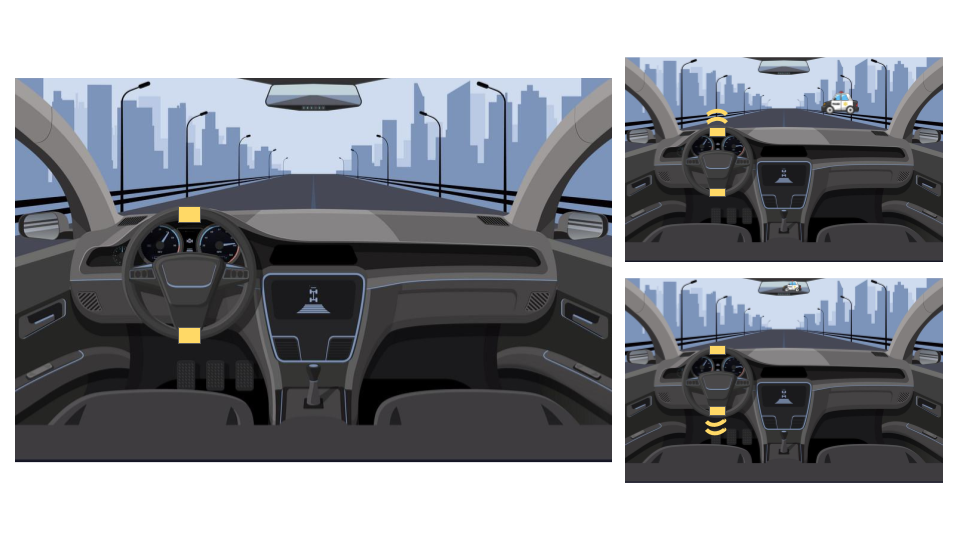Final Project: Theme Park Wearables
Target Audience: Children and adults on the Autism Spectrum attending theme parks
Background: A recent trend in the theme park industry has been making experiences and attractions more accessible to guests of all backgrounds and abilities. Whether it be physical and mental considerations, theme parks are making efforts to give all guests the chance to experience all of the emotions they hope to evoke within the park. Some rides and experiences have gone so far to be retrofitted to allow wheelchairs onboard or guests can get closed caption devices throughout the park so they can pick up various cues that they may not be able to hear. Lots of the current attempts to make parks more accessible, though, only focus on the rides and experiences themselves; very few solutions approach the time spent not on rides… which makes up almost 90% of the guest’s day. One specific demographic that struggles with the non-ride time are those on the autistic spectrum. There are a few major reasons for these struggles, two of which I will start to focus on. Firstly, waiting is very difficult. One of the documented struggles those with autism face is the keeping of time (https://www.ncbi.nlm.nih.gov/pubmed/25078724, https://www.spectrumnews.org/opinion/for-people-with-autism-time-is-slippery-concept/). Time management and understanding passage of time calls on various parts of the brain depending on short-term vs. long-term memory formation; however, those with ASD call upon both parts of the brain at all times, causing a mix-up in a person’s perception of time. Considering you spend most of your time at a theme park waiting in line, if it is hard to keep an accurate track of that throughout the day, it can be very frustrating and exhausting which are not the feelings that should be evoked while waiting for a roller coaster. In conjunction with that, since theme park lines and long and theme park designers know this, they go to extreme lengths to keep people entertained while they are in line. Whether with mobile games or physical activities and interactives, more and more line queues are trying to be interactive to keep people happy in line. While a great idea, a lot of these interactive installations can provide sensory overload to guests (https://iancommunity.org/challenging-behaviors). They are often loud, filled with flashing lights and have elements of surprise within them. Coping with sensory overload is another well-documented struggle of those with ASD and combining that with already-present waiting frustration can trigger even more intense negative reactions.
General Questions:
- Is there a way to communicate wait times while guests are in line that is non-invasive and does not rely on numbers or comparisons to other wait times?
- Are there ways to help guests combat adverse reactions to overstimulation at theme parks?

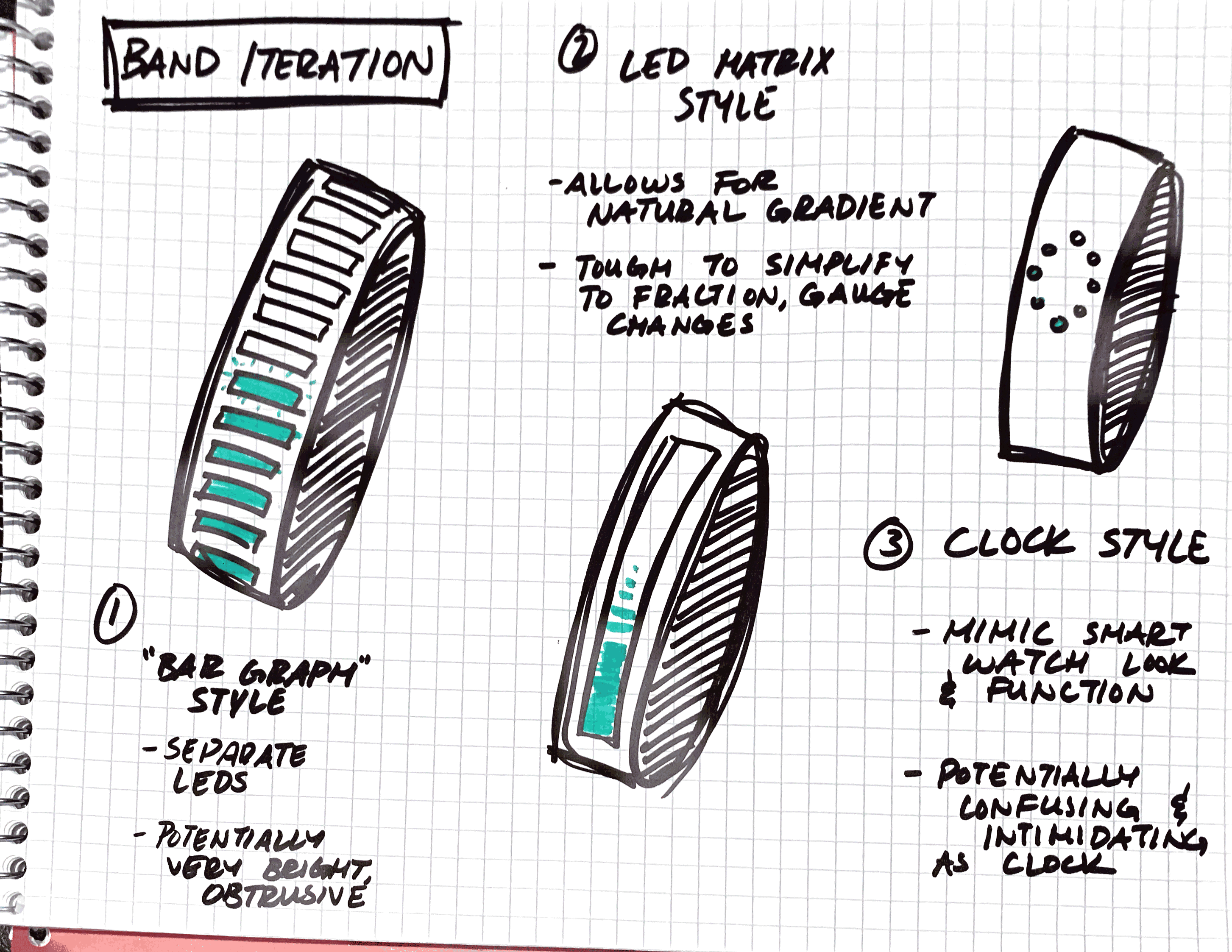
General Solutions:
- Many theme parks already have a wearables infrastructure that most, if not all, guests use that act as their park ticket, credit card and way to interact with more things in the park (https://disneyworld.disney.go.com/plan/my-disney-experience/bands-cards/). Utilizing that wearable would be fairly noninvasive in terms of not adding cumbersome pieces of technology to a guest’s day or giving them another app for their phone. A lot of the literature when it comes to teaching children with ASD to manage time efficiently focuses on consistent scheduling and visualizing that scheduling. While theme park plans are known to vary wildly and can change at any moment, they do not change very much once you reach a ride. Giving a guest a consistent visual reminder of the wait time and their place within the line would provide a nice benchmark for guests to look at every time they get in line. In addition, it could be a fairly simple physical representation, like LEDS within the wearable, of where you physically are in the line queue as opposed to how much time is left.
- Theme parks are synonymous with being “extra” and over-stimulating and I do not see them slowing down any time soon. Some theme parks have added “sensory waiting rooms” for guests to go and slow themselves down, calm their sense and the like in order to avoid some of the sensory overload (https://www.familyvacationcritic.com/best-autism-friendly-theme-parks/art/). I struggle with these rooms because then you are taking guests out of the experience that they want to have/are paying for. I believe you could take the same wearable infrastructure and embed physical feedback within it to allow guests to “cope” with the stimuli when it gets to be too much. The wearable could be outfitted with various sensors to track external stimuli (as well as a heart rate monitor or similar to track a guest’s response to stimuli) and once the external stimuli crosses a certain threshold, then the physical feedback kicks in to help center the guest by triggering certain breathing patterns. Research shows that when children with ASD face too much stimulation, they begin to “emotionally breathe” – essentially fast, large breaths where their chest cavities contract and expand rapidly (https://breathing.com/blogs/autism/optimal-breathing-autism-brain-development). This type of breathing is hard on your lungs and it cuts off blood-flow to the brain, both making it very difficult to stop and come back from. Using timed feedback, like haptic buzzes or similar, to guide guests to breathe at a consistent, safe, and calming clip could help guests to overcome some of the sensory overload and potentially still get to enjoy some of the experiences that they could not in the past (https://hal.inria.fr/hal-01609385/document).
Proof of Concept:
Done in two parts:
- Line Queue Model: used to illustrate guest spot in line based on RFID checkpoints and visualized by “bar graph” LEDs
- Cardboard model outfitted with RFID cards underneath the line at various spots, signaling different checkpoints in the line… in 5 years/with a theme park budget, these checkpoints could be incorporated more seamlessly into fence posts or other props within the line queue with better sensors that do not have a 3cm read distance
- RFID reader represents human walking through the line
- Bar graph LEDs visualize the progress through the line on the guest’s wrist
- Sound-Driven Motors: surprise moment that triggers a stimulating event that crosses a sensory overload threshold
- Sound sensor used to take in external data/factors within each bracelet
- Tactor/vibration motor used to create haptic feedback pattern to guide guest in breathe in and out in rhythm to allow them to calm down within the environment
Potential Down the Road:
With the success of RFID-driven wearables and interactive props and items, theme parks will likely begin exploring more ways to use them and potentially use them for more than just driving revenue. As sensors get smaller and smaller, more of them could be added to the bands to provide different levels of feedback both to and from the guest. If an attraction calls for guests to be cold, a smaller and less dangerous Peltier plate could evoke that feeling OR if a guest’s heart-rate gets to be too high in a simulator or other experience, their family members of maybe even staff can be notified if it gets into a dangerous territory. The slippery slope then presents itself of “how much data/sensor activity is too much?” and we can argue about that as the day is long, but there is the opportunity for more technology to be implemented in these devices. the potential addition of AI-driven “tracking/status monitoring” could also prove to be beneficial, having machines learn trends in line queues and wait times based on previous day/week/month riders or ride break-down similar or the like. At any rate, these pieces of technology are here to stay and people will expect more and more out of them during these fantastical experiences, they should be able to do more for everyone.
